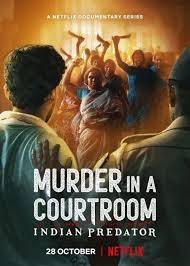Some of the most fascinating and high-stakes criminal investigations to take place in the world have unfolded in India’s justice system. Causes of Murder From a gruesome slaying to a white-collar crime, the path from a chilling murder to an ultimate conviction can be strewn with twist, turns and travails. This article uses some of India’s most compelling investigative stories true stories that not only gripped the working class but also asked at least the working journalist to stretch the country’s investigative and judicial system to the breaking point.
The Anatomy of an Indian Criminal Investigation
Understanding the Process: From FIR to Final Verdict
In India, criminal investigations follow a structured yet often delayed process. It typically begins with the registration of a First Information Report (FIR), followed by evidence collection, suspect interrogation, filing of a charge sheet, and eventually the trial and judgment. Each stage is a critical part of the pursuit of justice.
India’s Most Gripping Investigative Tales
1. The Aarushi-Hemraj Double Murder Case (2008)
The Crime Scene
In Noida, the murder of 14-year-old Aarushi Talwar and her domestic help, Hemraj, shocked the nation. Initially, suspicion fell on Hemraj, until his body was found on the terrace the following day.
The Investigation
Multiple agencies were involved, including the CBI (Central Bureau of Investigation). The case saw two conflicting CBI teams come to opposite conclusions. The narrative kept changing: was it an honor killing or a botched robbery?
The Courtroom Drama
The Talwar couple was convicted in 2013 but later acquitted in 2017 due to lack of evidence. The case highlighted flaws in investigation protocols and media sensationalism.
2. The Nirbhaya Rape Case (2012)
H3: National Outrage and Swift Action
After the brutal gang rape and murder of a 23-year-old paramedical student in Delhi, the country erupted in protests. The case led to fast-track courts and amendments in sexual assault laws.
Investigative Precision
Delhi Police faced immense pressure but quickly arrested the culprits using CCTV footage, public tips, and psychological profiling.
Judicial Outcome
In 2020, after a prolonged legal battle, all four adult convicts were hanged. This case changed how India viewed crimes against women and reshaped legal processes for such cases.
3. Sheena Bora Murder Case (2012/2015)
A Corporate Whodunit
Media executive Indrani Mukerjea was arrested in 2015 for the murder of her daughter, Sheena Bora—a fact she initially concealed.
Forensic and Digital Evidence
Mumbai Police, followed by CBI, unearthed evidence through forensic analysis, call records, and confessions.
Trial and Delays
The case is ongoing, marked by frequent media coverage, twists, and high-profile witnesses, showcasing how India’s elite can sometimes influence legal procedures.
4. Jessica Lal Murder Case (1999)
Witness Intimidation and Media Power
Model Jessica Lal was shot by politician’s son Manu Sharma at a party in Delhi. Initial witnesses turned hostile.
Investigative Setbacks
Despite strong public suspicion, Manu Sharma was acquitted in 2006 due to weak evidence and alleged tampering.
The Role of Media and Public Outrage
The media launched a campaign for justice. The Delhi High Court reopened the case, and Sharma was sentenced to life imprisonment. This case underscored the power of public opinion in reining in judicial complacency.
The Evolution of Crime Investigation in India
How Technology is Reshaping Investigations
- AI & Facial Recognition: Delhi Police and other agencies now use facial recognition systems to identify suspects from CCTV footage.
- Data Analytics: Crime data is being analyzed to predict hotspots and deploy forces more strategically.
- DNA & Forensics: India’s first National Forensic Science University (NFSU) is training experts to conduct faster and more accurate forensic analysis.
Landmark Legal Reforms
- Criminal Law (Amendment) Act, 2013 post-Nirbhaya
- Fast-track courts for sexual assault and child abuse cases
- Increasing use of video conferencing in trials to reduce delays
Media Trials vs. Judicial Trials
While media has played a crucial role in some cases (e.g., Jessica Lal, Nirbhaya), it has also jeopardized fairness in others (e.g., Aarushi Talwar). Balancing freedom of the press with presumption of innocence remains a challenge.
What Makes These Tales So Gripping?
Common Threads Across Cases
- High Stakes: These cases often involve political, financial, or social elites.
- Twists and Turns: Unreliable witnesses, changing statements, and forensic surprises keep the public engaged.
- Emotional Investment: Victims often represent the vulnerable, invoking national empathy.
Justice in Modern India A Work in Progress
The criminal justice system in India is undergoing changes. From primitive ways to high-tech investigations, the voyage continues. Every high-profile case not only challenges the law, it is also a reflection of the nation’s conscience.
These riveting stories from crime scene to courtroom reveal both the progress and the long-standing problems of India’s law enforcement and legal apparatus. They’re not just stories — they are lessons in accountability, resilience and reform.
Frequently Asked Questions (FAQ)
Q1: What is the role of the CBI in high-profile investigations in India?
The Central Bureau of Investigation (CBI) often takes over complex or politically sensitive cases. They have wider jurisdiction and more resources than local police.
Q2: How long do such criminal trials usually take in India?
Trials can take anywhere from months to decades due to case backlog, procedural delays, and appeals. For instance, the Nirbhaya case took over 7 years from crime to execution.
Q3: What technological tools are used in Indian crime investigations today?
Modern tools include forensic DNA analysis, cyber forensics, CCTV and GPS tracking, and AI-driven predictive policing models.
Q4: Are media trials legal in India?
While media trials are not illegal, they can undermine the fairness of a trial. The judiciary has occasionally warned against overstepping boundaries that could prejudice legal outcomes.
Q5: How can common citizens help in criminal investigations?
Citizens can assist by reporting crimes, providing CCTV footage, serving as witnesses, and supporting awareness campaigns. Public vigilance is a key element in law enforcement today.